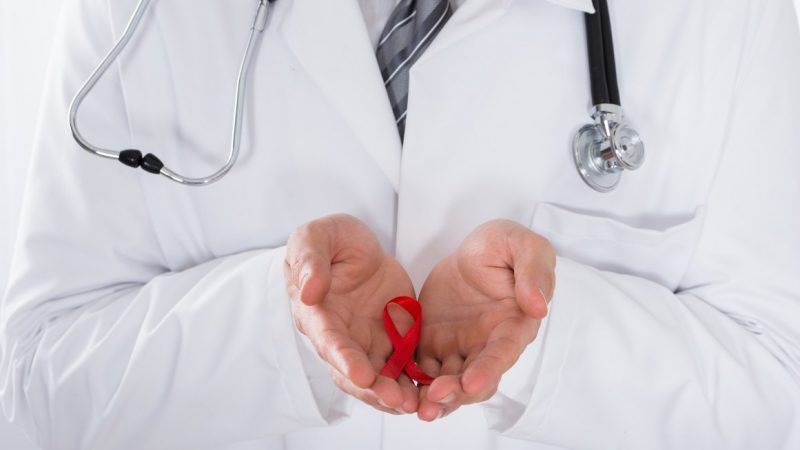Medical HIV Suppression Is Well Within Reach
More evidence that the treatment for HIV infection also stops its spread.

A new study published today in The Lancet shows that the medical therapy currently used to treat HIV is capable of preventing people from spreading it through sexual activity, even when they're not using condoms.
The theory is far from new, and this isn't the first study to show that HIV can be suppressed enough so that those who are infected can't pass the virus along to others. But it nevertheless is an important development. Advances in medicine and science are turning a once-deadly public health nightmare into something that can be managed.
This study involved more than 700 gay couples spread across 14 European countries where one partner was HIV positive and one was negative. The HIV-positive partner was taking regular drug therapy to suppress the levels of the virus in his body. Across seven years, these couples documented more than 76,000 instances of condomless anal sex.
In exactly zero cases—none at all—did the HIV-positive man infect his partner. There were 15 new HIV infections among those participating in the study, but researchers were able to determine that these new infections did not originate from the HIV-positive partners. (Thirty-seven percent of the HIV-negative participants acknowledged having condomless sex with others besides their partner.)
These results come on the heels of a similar study that included a mix of heterosexual and same-sex couples. There too, there were no transmissions of HIV from an infected partner if that partner was on drug therapy that effectively suppressed the virus. And before that, a pivotal study in 2015, this one focused primarily on heterosexual couples, found only four transmissions of HIV between an infected person and his or her partner.
All of that is to say that at this point, the news from today's study shouldn't come as a surprise. (Indeed, the outcome was previewed a year ago—today is the formal publication of the study.) It's another piece of evidence that HIV treatment doubles as HIV prevention, heralding a very important shift in the approach to managing the public health risks. The "undetectable=untransmittable" concept, shorthanded as "U=U," is relatively young campaign launched in 2016 to try to help explain that medical suppression of HIV so that its viral levels don't show up in blood tests means that it cannot be transmitted to other people. The hope here is to encourage more people to get tested and seek treatment.
In the United States, we're seeing about 38,000 new HIV infections per year, and about 15 percent of people who are infected do not even know it. Furthermore, only about half of the people with HIV in the United States have been receiving enough medical treatment to reduce the virus to the point that it would be considered "undetectable."
In his State of the Union Address in February, President Donald Trump said he wanted to eliminate the HIV epidemic in America in 10 years. It seems unlikely that it can be shut down entirely, but it is possible to get it suppressed to the point that new infections are very rare. These studies should be seen as evidence that we already have the solution to stop the spread of HIV. It's now a logistical matter to figure out the best ways to make sure that the treatment is accessible and that people are aware it's out there.


Show Comments (15)